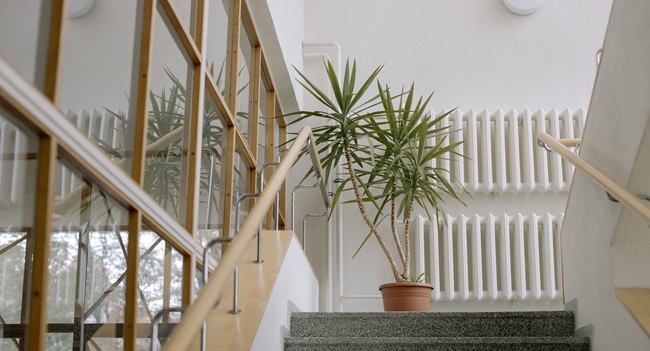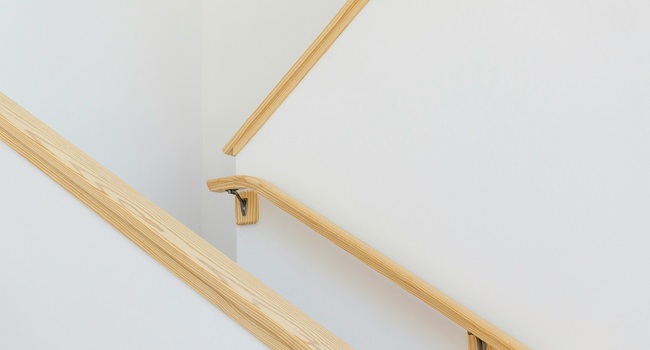Staircases are fundamental to building design, but without proper attention to handrail construction, they can pose serious safety risks. Handrails are essential for support and balance, particularly in high-traffic areas or in homes with children, elderly individuals, or disabled individuals. Unfortunately, inadequate installation or structural weaknesses in handrails often lead to accidents or costly repairs. Let’s outline seven key construction tips to prevent handrail failures so that they’re both functional and safe — read on!
1. Choose Durable Materials for Long-Term Reliability
The longevity of handrails largely depends on the materials used. The right handrails for stairs should be crafted from materials that can withstand frequent handling and resist environmental stress. Stainless steel, wrought iron, and hardwoods like oak are popular choices for their durability.
When selecting materials, don’t forget about the stairway’s location—handrails in outdoor environments need to withstand moisture and temperature fluctuations, whereas indoor handrails may focus more on aesthetics and comfort. Wooden handrails bring a warm aesthetic but require protective finishes to prevent warping or decay. In contrast, metals may need anti-corrosion coatings, particularly in humid regions. Always verify that the materials meet local building codes and standards for safety—in a home, public buildings, or commercial ones.
2. Ensure Proper Height and Distance from the Wall
The most important aspect of building safe staircases is ensuring that handrails are installed at the correct height and distance from the wall. In many regions, building codes require handrails to be positioned between 34 and 38 inches from the stair tread, which allows for comfortable and safe use by people of various heights. There should be a gap of at least 1.5 inches between the wall and the handrail to prevent fingers from becoming trapped. If the rail is too high, it can be challenging for children or shorter adults to reach; too low, it may fail to offer adequate support. Verifying these measurements with a spirit level or laser level during installation minimizes the chances of misalignment and ensures compliance with building codes.
3. Focus on Secure Anchoring to Support High Load Capacity
Handrails must be firmly anchored to the wall or stair stringers to prevent accidents from sudden detachments. Using heavy-duty brackets, anchors, and screws rated for high loads can dramatically improve handrail stability. If you are installing in drywall, make sure that the brackets are attached to wall studs rather than just drywall, as the latter cannot bear significant weight. For concrete or masonry walls, use expansion bolts or anchors specifically designed for masonry. Check that the anchoring elements are compatible with the handrail material to prevent corrosion or weakening over time. A secure installation protects not only the structure but also the safety of the individuals relying on the handrail.
4. Optimize Handrail Design for Comfort and Accessibility
The design of the handrail should prioritize user comfort and accessibility. Rounded or oval-shaped handrails are often easier and more comfortable to grip than square or flat designs. The grip diameter is also critical: a diameter between 1.25 and 2 inches generally offers a good balance for both larger and smaller hands.
In public buildings or workplaces, ADA (Americans with Disabilities Act) regulations may require specific dimensions to enhance accessibility for all users. Know that handrails should be continuous along the stairway without gaps or breaks, as this offers uninterrupted support. When handrails meet at corners, installing smooth transitions or corner brackets can maintain comfort and usability.

5. Use Anti-Slip Finishes and Protective Coatings
Applying anti-slip finishes and protective coatings to handrails, especially in outdoor or commercial settings, is essential to prevent wear and minimize slipping hazards. For wooden handrails, clear finishes can prevent moisture penetration and reduce the likelihood of splintering. Metal handrails benefit from powder coatings or anti-rust treatments, extending their lifespan and keeping them safe in high-traffic environments.
Anti-slip coatings or grip-enhancing finishes are crucial on railings installed in humid or wet conditions, such as near pools or outdoor staircases. For a more subtle approach, textured surfaces can also add grip and won’t drastically change the handrail’s appearance. Routine maintenance and inspections help maintain the effectiveness of these finishes, ensuring the handrails remain safe over time.
6. Plan for Regular Inspection and Maintenance
No handrail system is maintenance-free: regular inspections and upkeep should be necessary to prevent small issues from escalating into serious safety concerns. Inspect handrails periodically for signs of wear, such as loose brackets, rust, splintered wood, or chipped paint. Regular maintenance can involve tightening screws, reapplying protective coatings, or replacing worn-out brackets.
A proactive approach to maintenance is crucial in environments where handrails are heavily used—most notably, in schools, hospitals, and office buildings. Documenting inspections and repairs can help identify recurring issues and inform decisions on future replacements or upgrades. This level of care significantly extends the handrail’s life and keeps it in safe working order.
7. Follow Building Codes and Standards Strictly
Compliance with local building codes and industry standards is not just a legal requirement; it’s a critical step in ensuring the safety and reliability of handrails. Building codes provide guidelines on dimensions, materials, load capacity, and installation practices that are essential for structural integrity.
Codes often specify the height, spacing, and load-bearing requirements for handrails, making it easier for builders to design safe and accessible stairways. Failing to adhere to these codes can result in costly fines and legal liability, particularly in cases where non-compliant handrails turn into accidents. Always stay updated on the latest regulations in your area, as building codes can change to reflect new safety standards or materials.

Building safe, durable handrails requires careful planning, quality materials, and attention to detail throughout the installation and maintenance process. By following these construction tips—from choosing robust materials to adhering to building codes to planning for regular maintenance and inspection—you can ensure that handrails provide secure, long-lasting support for everyone using the stairs. Consistent inspection and maintenance will keep handrails in optimal condition, reducing the risk of costly failures and contributing to a safer environment. Thoughtful design and proper care create handrails that serve as a reliable safeguard for years to come.





























